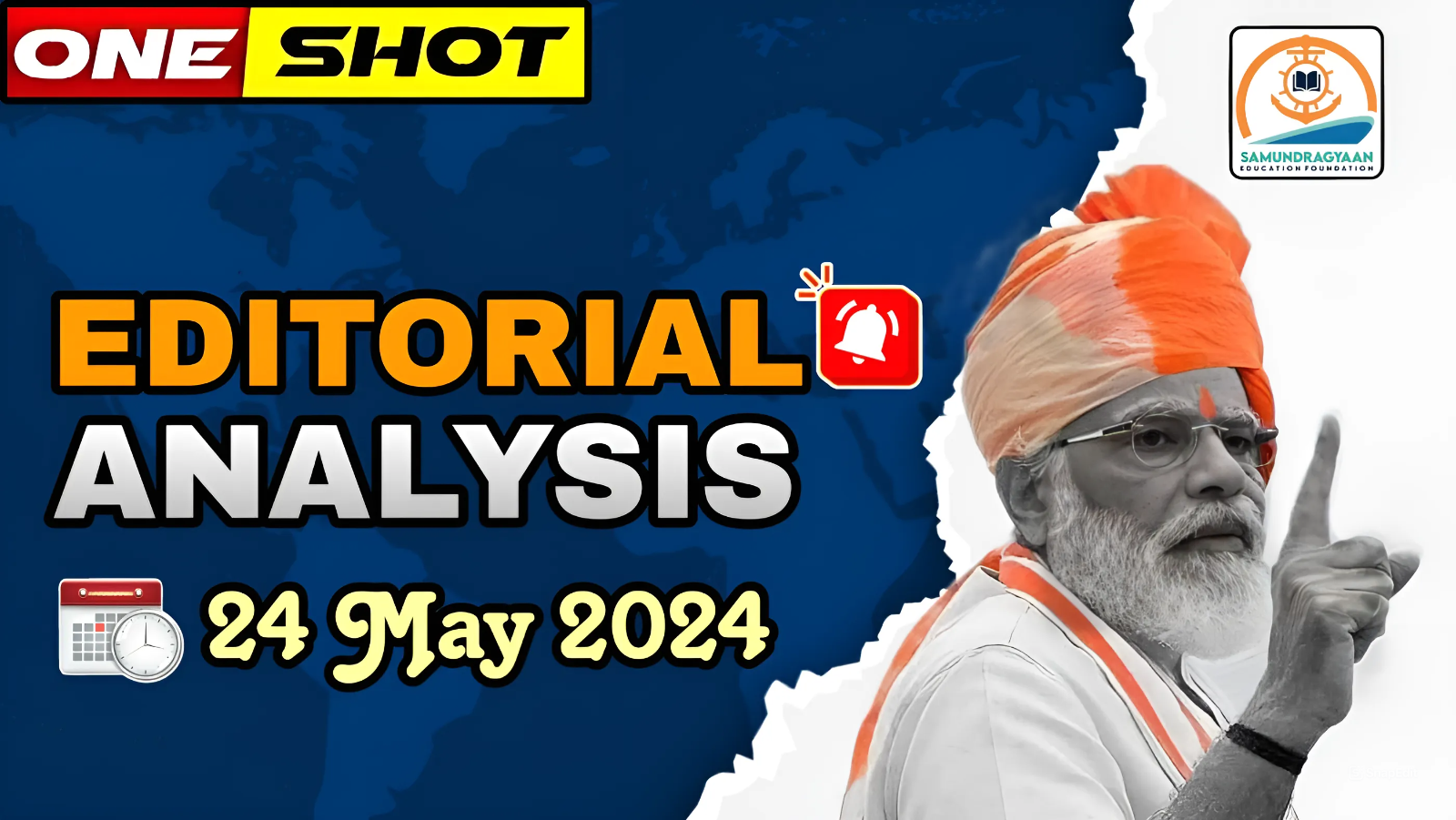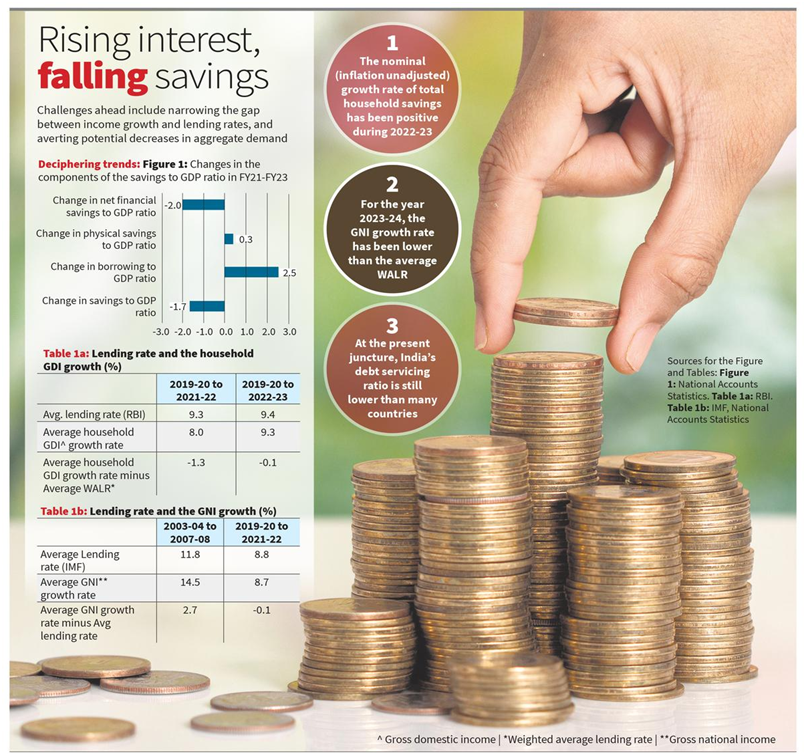Editorials & Articles : 24 May 2024
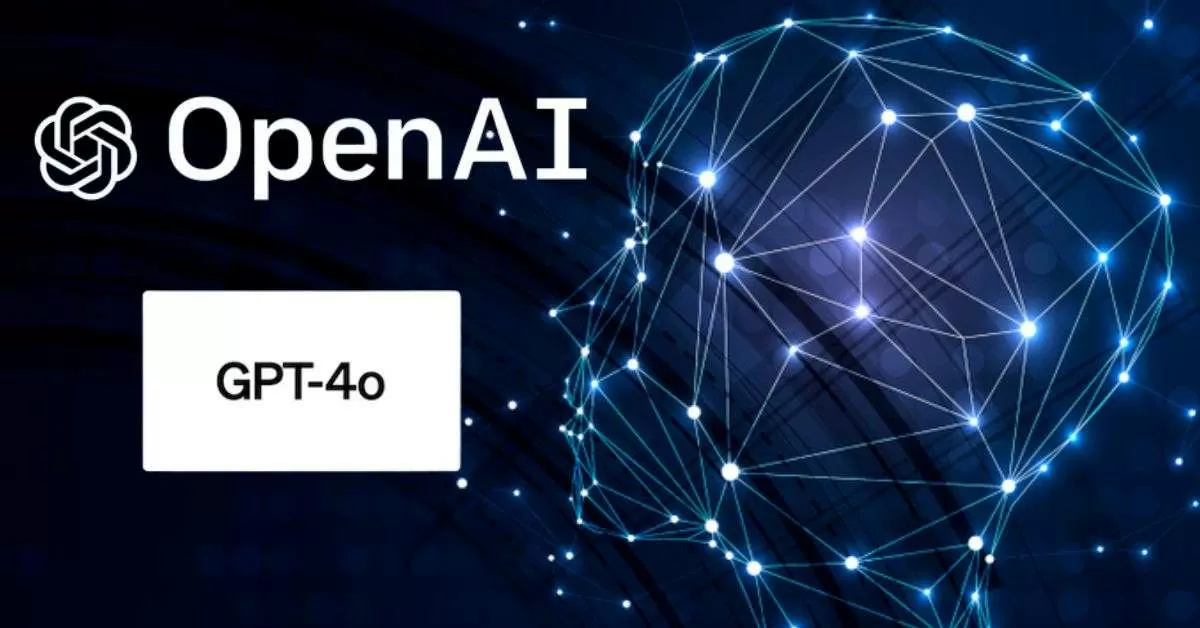
Why in news?
- Recently, Hollywood Actress Scarlett Johansson claimed that the GPT-4o’s voice, sounds very similar to her own. She has accused OpenAI of using her voice without permission despite previously declining licensing requests from CEO Sam Altman.
What’s in today’s article?
- Background
- Personality Rights
- Personality rights in India
Background:
- GPT-4o
- Recently, OpenAI unveiled its latest AI model called GPT-4o, saying it would improve on the existing features of ChatGPT.
- One such feature, named Voice Mode, lets users have voice conversations with the AI chatbot, and lets them choose from five kinds of voices.
- Johansson and Sky
- Johansson said one of these voices, named ‘Sky’, was allegedly copying her voice.
- Response of OpenAI
- OpenAI later said it was pausing the availability of Sky.
- It added in a statement that Sky was not Johansson’s voice but another voice actor’s, and was never intended to resemble hers.
The personality rights:
- About
- The name, voice, signature, images or any other feature easily identified by the public are markers of a celebrity’s personality and are referred loosely as personality rights.
- These could include a pose, a mannerism or any aspect of their personality.
- Many celebrities even register some aspects as a trademark to use them commercially.
- For example, Usain Bolt’s “bolting” or lightning pose is a registered trademark.
- The idea is that only the owner or creator of these distinct features has the right to derive any commercial benefit from it.
- Types of personality rights
- Personality rights are divided into two categories:
- The right of publicity, or the right to keep one’s image and likeness from being commercially exploited without permission. It is similar (but not identical) to the use of a trademark.
- The right to privacy or the right to not have one’s personality represented publicly without permission.
- Personality rights are divided into two categories:
Personality rights in India
- Legal/Constitutional basis
- Personality rights or their protection are not expressly mentioned in a statute in India.
- However, these rights are traced to fall under the right to privacy and the right to property.
- Even as the Delhi High Court and the Madras High Court have passed interim orders, the law is at a nascent stage in India.
- Existing provisions
- In India, the publicity rights are governed by statutes like the Trademarks Act 1999 and the Copyright Act 1957.
- With the 2017 judgment (Justice K. S. Puttaswamy (Retd.) v. Union of India), the personality rights were elevated to the position of constitutional rights.
- The ruling recognised the right to privacy as a fundamental right derived from the right to life & personal liberty (Article 21 of Indian Constitution).
- The court ruled that an individual may be permitted to prevent others from using his/her image, name and other aspects of his/her personal life and identity for commercial purposes without his/her consent.
- Other SC judgements
- Shivaji Rao Gaikwad (aka Rajinikanth) v. Varsha Production: Though there is no definition for the personality right under any statute in India, the Courts in India have recognized the personality right in various judgments.
- ICC Development (International) Ltd., Vs. Arvee Enterprises: The right of publicity has evolved from the right of privacy and any effort to take away this right from the individuals would be violative of Articles 19 and 21 of the Constitution of India.
- Personality rights on internet
- In 2011, the Delhi HC (in Arun Jaitley vs Network Solutions Pvt Ltd) stated that the popularity or fame of individuals will be no different on the internet than in reality.
- Name, due to its peculiar nature/distinctive character, coupled with the gained popularity has become a well-known personal mark under the trademark law.
- Personal rights vs consumer rights
- Celebrities are protected from commercial misuse of their name and personality.
- However, there have also been instances where the consumers are misled owing to false advertisements or endorsements by such personalities.
- Due to such cases, the Ministry of Consumer Affairs has made a notification – Guidelines on Prevention of Misleading Advertisements and Endorsements for Misleading Advertisements, 2022
- It aims to keep a check on misleading adverts of consumer products by imposing a penalty on the endorser.
- Recent examples from India
- In September 2023, the Delhi High Court had passed an interim order protecting the personality rights of Anil Kapoor.
- Anil Kapoor had sought to restrain the use of his name, the acronym AK, his voice, image, as well as his characters like Lakhan, Mr. India, Majnu Bhai, Nayak and the phrase jhakaas with his photo without his consent.
- In May 2024, the Delhi High Court protected the personality and publicity rights of Jackie Shroff.
- It restrained various e-commerce stores, AI chatbots, etc. from misusing the actor’s name, image, voice, and likeness without his consent.
- In September 2023, the Delhi High Court had passed an interim order protecting the personality rights of Anil Kapoor.
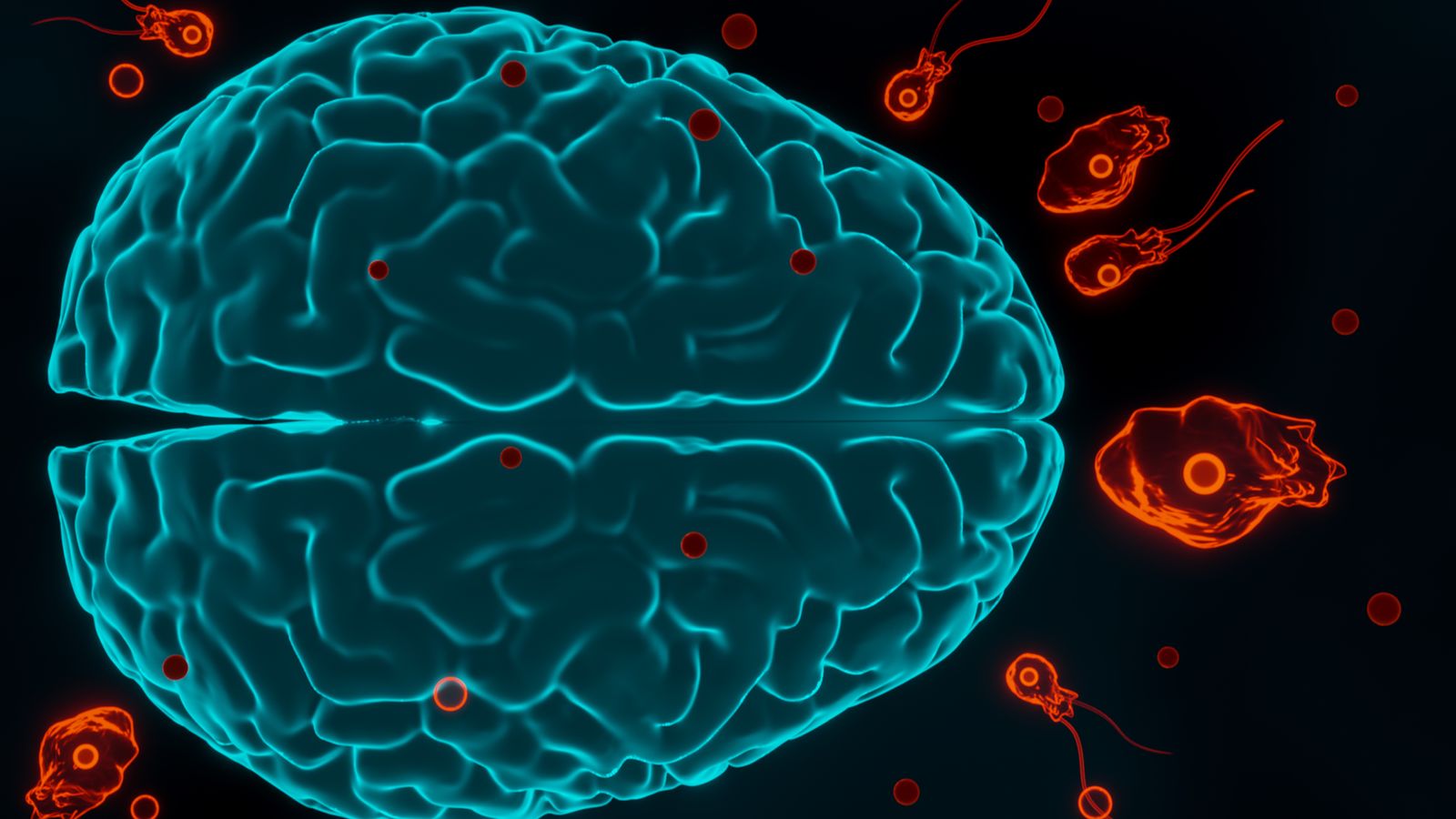
Why in news?
- A five-year-old girl receiving treatment for a rare brain infection called primary amoebic meningoencephalitis (PAM), caused by the “brain-eating amoeba” Naegleria fowleri, has died at the Government Medical College Hospital in Kozhikode.
What’s in today’s article?
- Naegleria fowleri
- Symptoms of PAM
- Chances of survival
- Treatment options
- Prevention measures that a swimmer should consider
Naegleria fowleri
- About
- It is a single-cell organism, found in a warm freshwater environment such as lakes, hot springs and even in poorly maintained swimming pools.
- First discovered in Australia in 1965, it is so small that it can only be seen with a microscope.
- Only one species of Naegleria, Naegleria fowleri, infects people.
- Human infection – process
- The amoeba enters the human body through the nose and then travels up to the brain.
- This can usually happen when someone goes for a swim, or dive or even when they dip their head in a freshwater body.
- In some cases, it was found that people got infected when they cleaned their nostrils with contaminated water.
- So far, scientists haven’t found any evidence of the spreading of Naegleria fowleri through water vapour or aerosol droplets.
- Once Naegleria fowleri goes to the brain, it destroys brain tissues and causes a dangerous infection known as primary amebic meningoencephalitis (PAM).
- The amoeba enters the human body through the nose and then travels up to the brain.
- Non-communicable in nature
- Naegleria fowleri infection does not spread from person to person, nor does it manifest symptoms when contracted in other forms.
- The infection is primarily associated with a warm freshwater environment, especially during hot summer months when water temperatures are higher.
Symptoms of PAM
- As per the US Centers for Disease Control and Prevention (CDC), the first signs of PAM start showing within one to 12 days after the infection.
- In the initial stages, they might be similar to symptoms of meningitis, which are headache, nausea and fever.
- In the later stages, one can suffer from a stiff neck, seizures, hallucinations, and even coma.
Chances of survival
- Brain-eating amoeba can be fatal, with a recorded death rate of 97 per cent. The chances of survival from this infection are unfortunately low.
- The infection rapidly destroys brain tissue, leading to inflammation and neurological symptoms such as severe headache, fever, nausea, vomiting, stiff neck, seizures and coma.
- Early diagnosis and prompt initiation of treatment are crucial, but even then, the prognosis remains grim.
Treatment options
- The US-based Centers for Disease Control (CDC) recommends treatment with a combination of drugs, often including amphotericin B, azithromycin, fluconazole, rifampin, miltefosine, and dexamethasone.
- These drugs have been used to treat patients who survived. Miltefosine is the newest of these drugs.
- It has been shown to kill Naegleria fowleri in the laboratory and has been used to treat three survivors.
Prevention measures that a swimmer should consider
- Limit activities in warm fresh water bodies such as lakes, hot springs and ponds unless they are disinfected with chlorine.
- Use nose protection while swimming or diving, maintain clean swimming pools, follow proper hygiene, washing your hands thoroughly with soap and water before and after water activities, as well as before eating.
- Use sterile water for nasal cleaning.
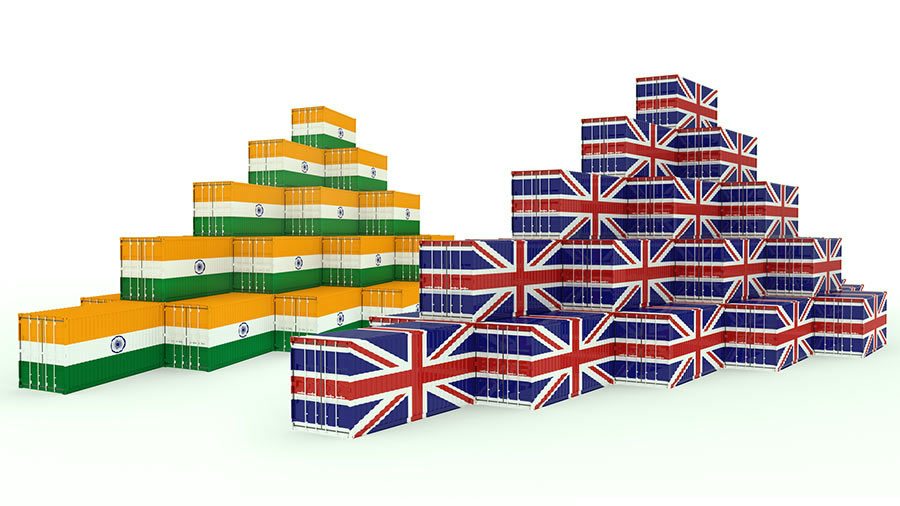
Why in News?
- The Union Ministry of Commerce and Industry has started looking at ways to strengthen India’s negotiating capabilities for free trade agreements (FTAs) with the UK, EU, etc.
- Experts pointed out that the country’s negotiating strategy cannot rely on transferable generalist civil servants and could need a separate service to handle trade negotiations.
What’s in Today’s Article?
- Major Pending FTAs of India
- Why India’s Major FTAs Pending for Years?
- What are the Issues with India’s Negotiating Capabilities for FTA?
- What Needs to be Done to Strengthen India’s Negotiating Capabilities for FTA?
Major Pending FTAs of India:
- India is currently negotiating FTAs with the United Kingdom (UK), the European Union (EU), Oman, Australia, and a review of the 2009 trade pact with the Association of Southeast Asian Nations (ASEAN).
- Following the general elections, the government has made indications that it intends to reopen talks with the Eurasian Economic Union (EEU), which is led by Russia.
- After years of discussions, India has already made the decision to pull out of the Regional Comprehensive Economic Partnership (RCEP) agreement, which was led by China.
- Trade deals with more competitive countries such as the UK and EU have been stuck for years, despite India’s ability to manage early harvest accords with these countries.
Why India’s Major FTAs Pending for Years?
- Trade agreements are becoming more and more complex and India’s trade partners conduct detailed studies in areas ranging from India’s informal labour market to entire product value chains.
- However, India lacks such deep research and despite having one of the best trade negotiators, there is an information and process gap.
- One of the prime reasons for delays in negotiating major FTAs is that India is a high tariff country and it spends a lot of time in tariff negotiations.
What are the Issues with India’s Negotiating Capabilities for FTA?
- Loss of institutional memory: On account of the routine transfer of key civil servants steering extended trade negotiations.
- Lack of efficient file-keeping: The Ministry of Commerce and Industry does not have an efficient database and that is one of the reasons for loss of institutional memory.
- Lack of permanent institutional structure: India’s bilateral and multilateral talks fall short while facing subject matter experts, especially from developed nations.
- These experts from developed nations tend to deploy considerably larger teams of negotiators and researchers with decades of experience.
- Serious shortage of accountability: Indian negotiators fail to map research deliverables, which makes it challenging to pinpoint blame when there is a shortcoming.
What Needs to be Done to Strengthen India’s Negotiating Capabilities for FTA?
- Clarity of thoughts:
- India needs clarity on the motivation behind the FTA, i.e., what it wants to achieve and how FTA can help to get there.
- If India can streamline and reduce unilateral tariffs, and focus on areas like having time bound Mutual Recognition Agreements (MRAs) to address non-tariff barriers, the benefits of trade agreements will be more.
- Briefing Cabinet, Parliament: Experts suggest detailed reporting and periodically informing the parliament and cabinet about the negotiations.
- Setting accountability:
- Before going for any negotiating meeting, each official had to get the brief for the meeting approved.
- On return, they must file a detailed report on what happened in the meeting.
- Need for permanent institution:
- When new officers join the negotiating table with little knowledge on what was negotiated before, India loses out on institutional memory-wise.
- Other countries have dedicated negotiation institutional structures, where the same officers enjoy a tenure of 30-40 years.
- Therefore, India must create an institutional structure in various centres namely,
- Centre for WTO studies,
- Centre for Trade and Investment Laws and
- Centre for Regional Trade.
- Preparing standard operating procedures (SOP): The Ministry of Commerce and Industry is working on preparing a set of fresh SOPs on streamlining trade talks.
- Understanding fast changing contours of trade talks: That go beyond traditional areas such as tariffs concessions to labour and environment.
- Extensive record keeping: To build institutional memory, the ministry should revive practise of extensive record keeping on negotiations.
- Audit: The extent of the issue might be discovered by a third-party audit of the ongoing negotiations.

Why in News?
- Household net financial savings to GDP ratio in India have declined due to increased borrowing and structural shifts rather than a mere change in savings pattern.
- Hence, there is a need for macroeconomic policies to support household income growth to reduce financial stress on individuals and stabilise the macroeconomy.
What’s in Today’s Article?
- How the Debate on India’s Declining Household Savings Emerges?
- Declining Household Savings is Not a Mere Change in Savings Pattern
- What is the Argument of the CEA?
- What is the Problem with the CEA’s Argument?
- Is a Higher Household Debt-to-Income Ratio a Sign of a Structural Change?
- What are the Macroeconomic Challenges Highlighted by this Structural Change?
How the Debate on India’s Declining Household Savings Emerges?
- According to a news article, there has been a drastic fall in household net financial savings to GDP ratio during 2022-23 in India on account of a higher borrowing to GDP ratio.
- The higher borrowing to GDP ratio largely reflected a household’s need to finance greater interest payment commitments, leading to an increase in financial distress of the household.
- In response to this article, the Chief Economic Advisor (CEA) to the Government of India has interpreted this trend as a mere shift in the composition of household savings.
- According to the CEA, households incur greater borrowing (or reduce net financial savings) solely to finance higher physical savings (investment).
- Therefore, there is the need to find inconsistencies in this interpretation of the CEA and highlight some signs of structural shifts in the Indian economy.
Declining Household Savings is Not a Mere Change in Savings Pattern:
- The household savings to GDP ratio is the sum of its net financial savings to GDP ratio, physical savings to GDP ratio and gold and ornaments.
- A mere shift in the composition of savings would have kept the overall household savings to GDP ratio unchanged.
- This is because the lower net financial savings to GDP ratio or higher borrowing to GDP ratio is compensated by higher physical savings to GDP ratio.
- However, the trends depict another picture.
- The net financial savings to GDP ratio declined by 2.5 percentage points, whereas the physical savings to GDP ratio increased only by 0.3 percentage points.
- The household borrowing to GDP ratio increased by 2 percentage points, significantly more than the increase in the physical savings to GDP ratio.
- With the gold savings to GDP ratio remaining largely unchanged, the household savings to GDP ratio declined by 1.7 percentage points.
What is the Argument of the CEA?
- The CEA’s response is based on the analysis of absolute nominal (inflation unadjusted) numbers of household total savings.
- The nominal value of a household’s total savings has increased, as the nominal value of physical savings has increased more than the fall in nominal value of net financial savings.
What is the Problem with the CEA’s Argument?
- This trend merely shows that the nominal growth rate of total household savings has been positive during 2022-23.
- However, this trend neither addresses the historic fall in net-financial savings to GDP ratio nor invalidates the explanation of the higher borrowing to GDP ratio.
Is a Higher Household Debt-to-Income Ratio a Sign of a Structural Change?
- The share of interest payment in household income is the product of interest rate and debt-income ratio.
- The recent period has been associated with a sharp rise in both these variables.
- The debt-income ratio of the household is increasing due to –
- A higher net borrowing-income ratio of the household, where net borrowing is the difference between total borrowing and interest payments.
- The increase in interest rates and reduction in nominal income growth rate of households. The phenomenon is known as “Fisher dynamics”.
- The key structural feature that has emerged in the post-COVID period is that the nominal income growth rate has often been lower than the weighted average lending rate.
- However, the good news is that India’s debt servicing ratio (at present) is still lower than that of many countries.
- Debt servicing ratio is a comparison of one’s debt commitment to his/her income.
What are the Macroeconomic Challenges Highlighted by this Structural Change?
- With the emergence of the Fisher dynamics, there are two unique challenges that confront the Indian economy.
- The first challenge pertains to decreasing the gap between interest rate and income growth, which can quickly push up household’s interest payment burdens.
- The second challenge is preventing aggregate demand from declining in the face of household debt obligations and rising interest rates.
- These challenges point towards the need to include a macroeconomic policy to stimulate and support household income growth and stabilise the economy.

